Why the Right Diagnosis Matters: Meet a Doctor Working to Get it Right and Hear How Avery Inspires Him
Brain tumors in children can sound especially daunting – but some brain tumors can be malignant and not especially life-threatening. Therefore, getting an accurate diagnosis is key, and Dr. James Olson of Seattle Children’s Hospital is working on more accurately diagnosing and treating brain cancers in children.
 Dr. James Olson with Avery, one of his patients.
Dr. James Olson with Avery, one of his patients. Meet the St. Baldrick’s 2019 Ambassadors!
Each year, the St. Baldrick’s Foundation picks five kids to serve as Ambassadors. In this role, they represent the thousands of kids affected by childhood cancers and remind us of the importance of supporting childhood cancer research.
Take any group of kids and they’ll all have their own way of talking, their own opinions on books, movies, and video games, their own favorite foods.
But there is one thing the St. Baldrick’s 2019 Ambassadors have in common: childhood cancers. Beyond that, they share the support of loving families and a desire to inspire others to raise money for childhood cancer research.

Our 2019 Ambassadors, from left to right: Aiden, Arianna, Sullivan, Gabby, and Brooke.
One Sibling Was Diagnosed with a Brain Tumor and Then the Unthinkable Happened
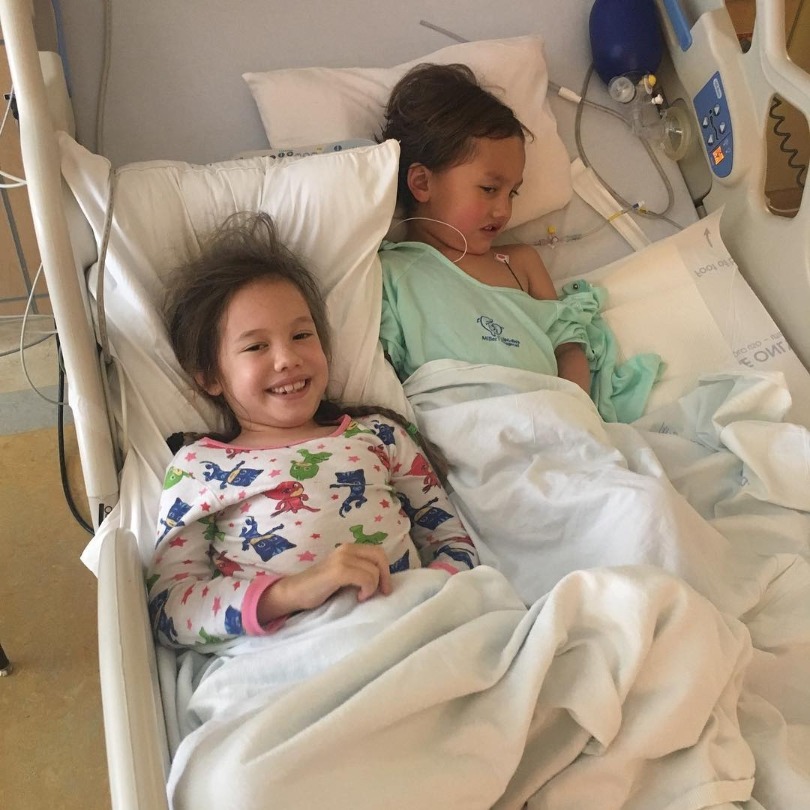
Kalea and Noah snuggle in one hospital bed during treatment.
From waking up in the morning to getting tucked in at night, siblings Noah and Kalea were practically inseparable.
They’d eat their breakfast together – whatever 6-year-old Kalea had, 4-year-old Noah wanted too – and brush their teeth together. The two kids would get so immersed in playing together, and so quiet, that their parents, Duncan and Nohea, would get nervous and go check on them. Inevitably, the adults would interrupt some elaborate imaginary adventure and the kids would shoo them away.
Researcher Targets Childhood Cancer With a Virus
Just mentioning herpes might make some people a little nervous, but in this story, herpes is the good guy. Read on for more about St. Baldrick’s Scholar Dr. Gregory Friedman’s work on a genetically altered version of the virus that could be the next targeted therapy for kids with brain tumors.
BREAKING NEWS: An innovative therapeutic tool developed by Dr. Friedman has proven to be safe in kids with high-grade gliomas, according to recently released clinical trial findings. Crafted from the herpes virus that causes cold sores, the genetically modified virus has already shown promise in killing cancer cells and stimulating the immune system to attack the brain tumor – with one patient still showing progress more than a year after treatment! In the next phase of research, Dr. Friedman will study how safe the viral tool is when combined with one low dose of radiation, which is expected to boost the immune system and help the virus replicate.
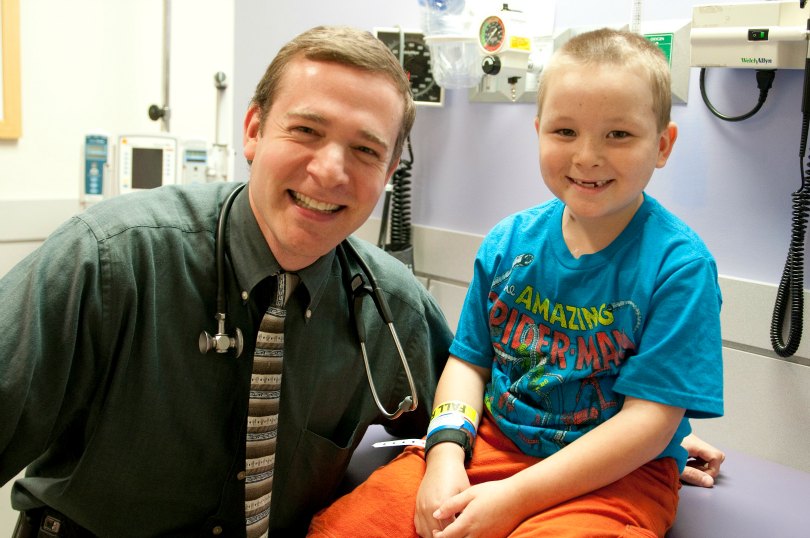
Dr. Friedman smiles with a young patient in an exam room at Children’s of Alabama.
St. Baldrick’s Scholar Dr. Gregory Friedman discovered that the herpes simplex virus, with a few modifications, will kill pediatric brain cancer cells — without causing cold sores.
Honored Kid Sully Beats Brain Cancer One Step at a Time
Honored Kid Sully loves to bike, run and wrestle with his brothers like any 11-year-old boy. He even tried out skiing over spring break. You’d never expect that just a year and a half ago, Sully woke up from surgery unable to walk.
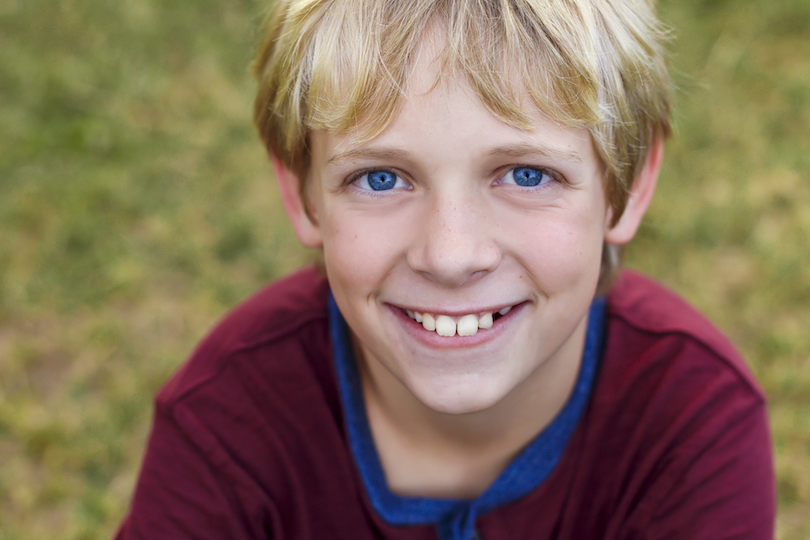
Honored Kid Sully loves to bike, run, ride roller coasters and play with his brothers, Cashel and Finn. He wants to be a civil engineer when he grows up and dreams of designing the world’s best roller coasters.
It all started with back pain. It was innocuous at first. Hot baths would relieve Sully’s pain for a while, but it would come back with a vengeance. Finally, after many doctor’s visits, a lot of ibuprofen and no improvement, Sully’s parents, Dan and Jen, brought their son to the ER.
Hours later, the boy was in emergency brain surgery.
Staying Hopeful in the Face of Bad News: An Update on Daisy
It seems like only a short time ago that we were celebrating clear scans. It was January 2016 and our daughter Daisy had been given the gift of life. We now find ourselves in the midst of a nightmare.
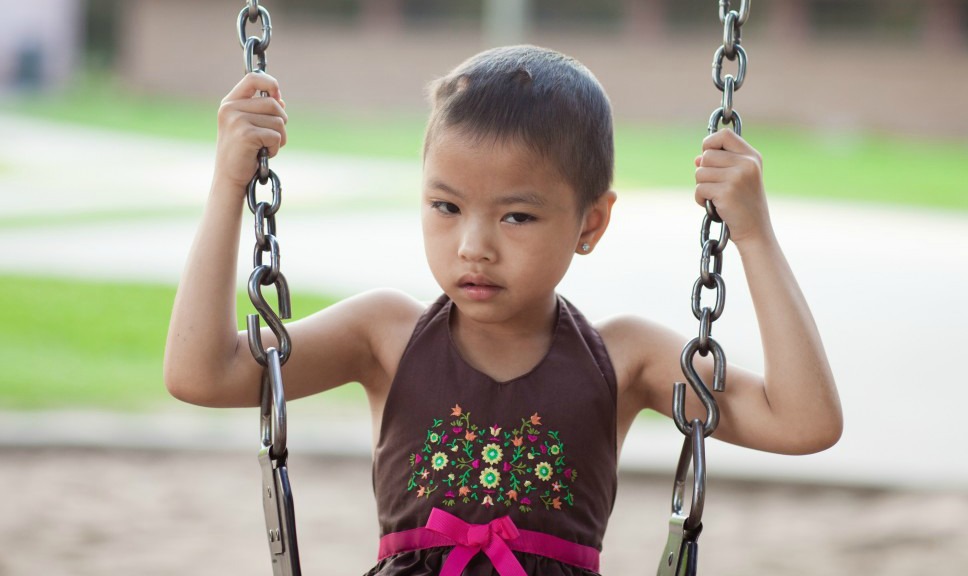
2015 Ambassador Daisy was diagnosed with medulloblastoma, a type of brain cancer, when she was just 6 years old.
Happy Mario Day from Ambassador Benny!
It’s Mario time! Today is March 10, otherwise known as Mar10 — Mario Day! (Get it??) We are celebrating the famous pixelated plumber with Ambassador Benny, an avid gamer and Mario’s number one fan. Ready to read on? Let’s-a go!
Benny displays his expansive collection of Wii U games. He loves games where he can battle one of his friends or where he gets to be Mario, which is called a role playing game.
Benny was just 5 years old when he first encountered Mario, the mustachioed, pot-bellied hero in the monogrammed red hat who rescues princesses and destroys evil-doers in the wildly popular Nintendo game series Super Mario Brothers.
St. Baldrick’s Advocate of the Month: Wendy Baskins
Need some monthly inspiration? We’ve got it! Each month we will be highlighting one of our heroes right here on the blog. Without further ado, say hello to our first Advocate of the Month: Wendy Baskins. Wendy never backs down from a fight — just like her son, Stephen, who battled cancer three times. Read on for more about Stephen, what he taught her, and why Wendy fights for families facing childhood cancer.
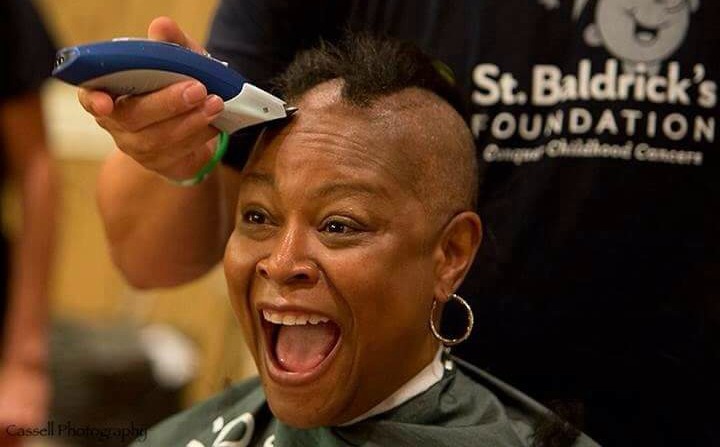
Wendy wears a big grin as she goes bald for childhood cancer research during the 46 Mommas Shave for the Brave event. Courtesy of Cassell Photography
When the going gets tough, the tough get going. That is one of the many things Wendy Baskins learned from her son, Stephen.
Meet Benny
Benny and his family were on vacation in Orlando when a severe headache and vomiting landed him in the ER. A simple CT scan revealed he had a tumor in the back of his brain.
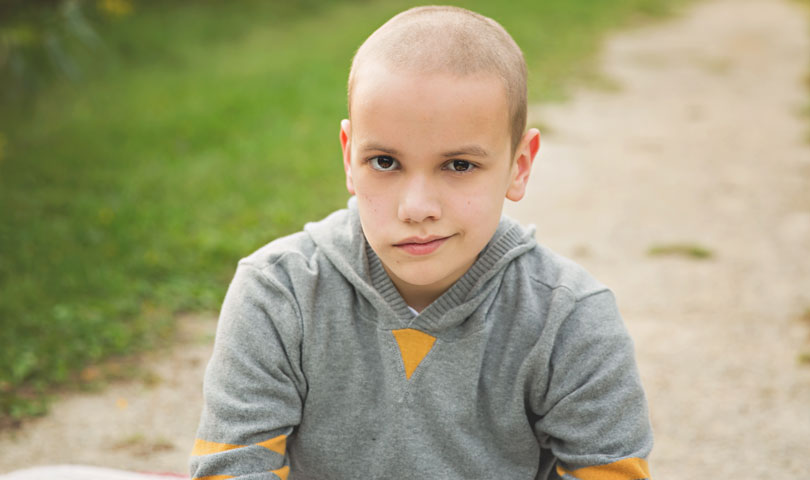
Destroying the Defenses: Researchers Fight Brain Tumors With Immunotherapy
St. Baldrick’s Scholars Dr. Alex Huang and Dr. Agne Petrosiute are studying how switching off a protein could lead to new treatments and cures for kids with brain tumors. Read on for more about their unexpected discovery, its implications for immunotherapy, and why Dr. Huang compares himself to those fuzzy little bears in Star Wars.
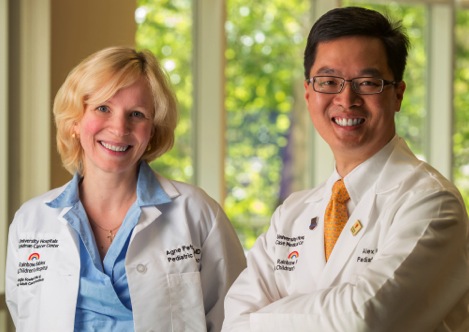
Dr. Agne Petrosiute (left) and Dr. Alex Huang study how the immune system can be harnessed to fight pediatric brain cancer.
Dr. Alex Huang likens himself and his colleague, Dr. Agne Petrosiute, to Ewoks battling the Death Star.
“We are the Ewoks that found the controller on this planet, and all of a sudden the Death Star cannot put up the shield anymore,” he said. “And so now, Luke Skywalker can go in there and blow it up.”
It may seem like a curious explanation, but it fits.
« Newer PostsOlder Posts »

 SBF
Tweets »
SBF
Tweets »